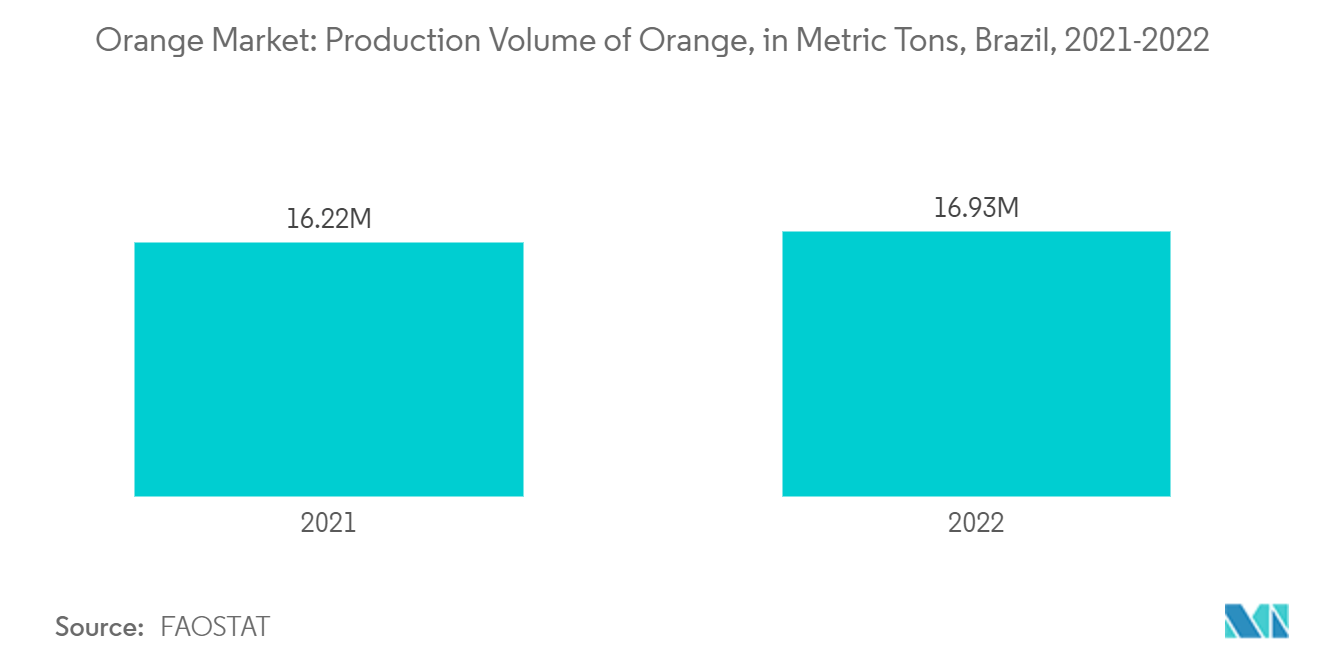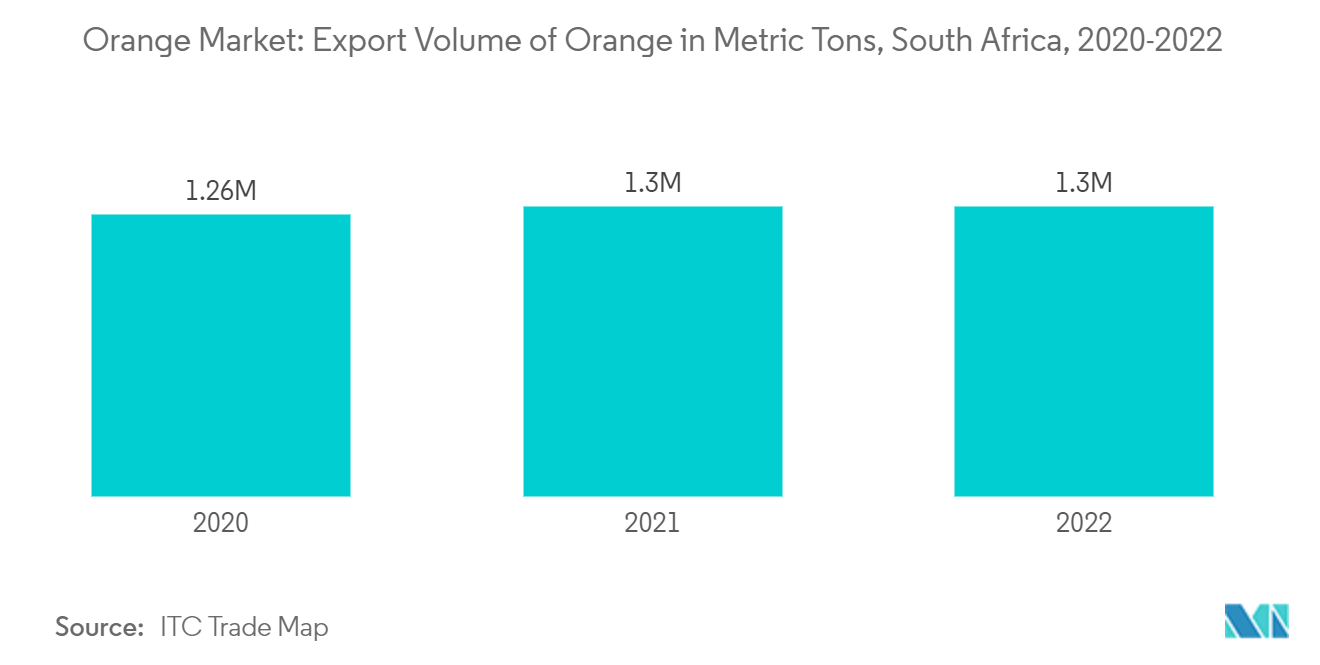Market Trends of Orange Industry
Brazil Holds a Significant Market Share in Orange Production
In 2022, Brazil was the leading global orange producer, with a production volume of about 16.9 million metric tons, followed by China with 7.7 million metric tons, as per FAO. The harvest season for oranges in Brazil runs from July to January. Different varieties of orange mature at different times, allowing the farms to produce a steady supply of fruit in the country. Moreover, Hamlim, Westin, Rubi, Valencia Americana, Seleta, Pineapple, BRS Alvorada, Pera Rio - pear orange, Valencia, Folha Murcha, Valencia, and Natal are the major cultivated varieties of orange in Brazil.
The two major orange-producing areas in Brazil are located in the Northern and Southern regions of the State of Sao Paulo, and the main producing area in Brazil is known as the Citric Belt, a region that encloses mostly the state of Sao Paulo and the western portion of Minas Gerais, known as Triangulo Mineiro. According to the US Department of Agriculture, Sao Paulo accounted for around 76.9% of the country’s total orange production in 2022.
According to the US Department of Agriculture, the total number of orange-bearing trees was 169.29 million, covering an area of 399,415 hectares in the Citric Belt. In 2022, the Brazilian industry produced around 70% of the world’s industrial orange juice, which is the reason behind the increasing production of oranges in the country.
Domestic consumption of fresh oranges is growing as consumers demand freshly squeezed orange juice in their homes, bakeries, and restaurants. Further, the domestic market for fresh oranges has become a significant consumer of Brazil's total orange production. More than 100 million boxes of oranges, each weighing 40.8 kilograms, equivalent to approximately 30.0% of Brazil's output, are consumed by the Brazilian population annually. According to the Brazilian Association of Citrus Exporters, in the year 2021-2022, 224 million boxes of 40.8 kg each were utilized for processing, constituting an increase of 2 million boxes from 2020-2021.

South Africa Leads Among Regional Segments in the Exports of Orange
Orange consumption patterns appear to vary by demographic, economic, and climatic characteristics. The demand for oranges peaks during November, December, and January, when the temperatures are slightly lower. The winter season is highly suitable for the consumption of oranges, owing to their health benefits.
The orange industry plays a crucial role in the South African agricultural industry, which is a key player in global export markets. According to the ITC Trade Map, the export of oranges from South Africa reached 1,298,731 metric tons in 2022, an increase of 8.64% from 2019. Oranges are South Africa's most cultivated citrus type and account for roughly 60% of all South African citrus exports. South Africa exports oranges to more than 100 countries worldwide, but the Netherlands remains its largest export market, accounting for an approximately 18.2% share of orange exports in 2022. Besides, the United States is also considered one of the emerging importers of South African oranges. South Africa’s exports to the United States are expected to continue to grow, benefiting from duty-free access under the African Growth Opportunity Act (AGOA). For instance, in 2023, South Africa exported 57,391 metric tons of oranges worth USD 63,853 thousand to the United States as compared to 47,501 metric tons worth USD 58,353 thousand in 2021, ITC Trade Map estimated.
Subsequently, consumers in different regions, including North America and Europe, are shifting their preferences toward orange juice. According to a USDA report, in the Northeast United States, consumers show the strongest preference for orange juice, and those in the West have the strongest preference for fresh oranges compared with consumers elsewhere. Consumers in the Midwest and South consume fewer orange products overall. However, the per capita consumption of fresh oranges is constantly growing worldwide, particularly during winter, owing to their high availability. Therefore, the exports of oranges from South Africa have significantly increased in recent years, owing to the escalating consumption during the winter months, which varies for different countries.


